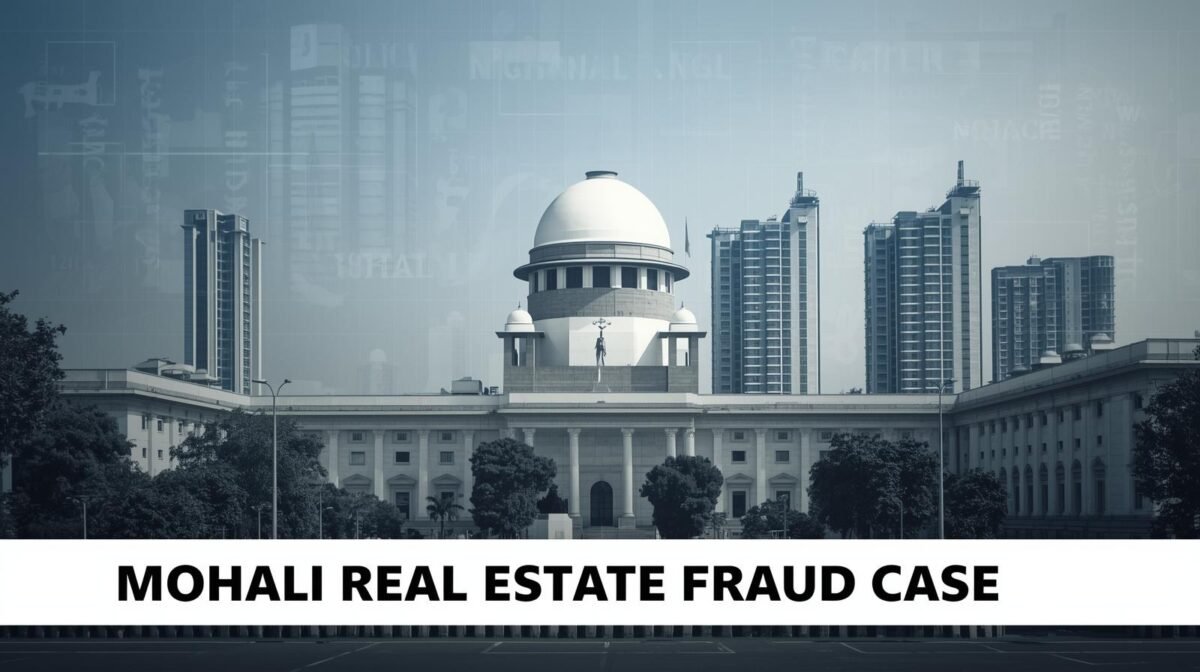Estimated reading time: 5 minutes
The Supreme Court on Tuesday cleared the way for the Central Bureau of Investigation to register six additional cases into alleged fraud by developers and banks, expanding its probe into what judges described as an “unholy nexus” that has left thousands of homebuyers in limbo. The decision brings Mohali real estate fraud case investigations under sharper scrutiny, alongside projects in Mumbai, Bengaluru, Kolkata and Prayagraj.
A bench led by Justices Surya Kant, Ujjal Bhuyan and N Kotiswar Singh accepted submissions from Additional Solicitor General Aishwarya Bhati, who appeared for the CBI. She informed the court that the agency had completed preliminary inquiries into projects across several cities, except those tied to Supertech Ltd, and was now prepared to file regular cases. The court agreed and instructed the agency to move ahead “as per law,” while ensuring that certain findings from sealed reports are shared with the court-appointed amicus curiae, senior advocate Rajiv Jain.
The development follows the Supreme Court’s earlier July ruling, which allowed the CBI to register 22 cases connected to projects in Delhi-NCR. That round of inquiries focused on allegations that developers, banks, and even local authorities colluded under subvention schemes, where banks released loans directly to builders with the promise that developers would service EMIs until buyers received possession of their homes. When builders defaulted, banks began demanding repayments from buyers, even though they had not been handed their flats.
At the heart of the dispute are more than 1,200 petitions filed by homebuyers across multiple states, including Punjab, who accuse developers and financial institutions of operating a scheme that effectively transferred liability onto ordinary families. In Mohali, the real estate fraud case has highlighted how regional markets are not immune to practices that first drew national attention in Noida and Gurugram.
The CBI’s findings so far suggest a pattern of irregularities that go beyond individual projects. The agency told the bench that its inquiries revealed cognisable offences had been committed, warranting full criminal cases. Bhati added that the CBI intended to conduct search and seizure operations to secure evidence. The court noted the urgency, stressing that buyers cannot be left without recourse while large sums are locked in delayed or abandoned developments.
The legal backdrop is complex. Under the subvention model, which grew popular in the late 2000s and early 2010s, developers convinced banks to disburse large amounts in lump sums, often worth hundreds of crores of rupees. Builders were then supposed to shoulder the repayment burden until projects were delivered. However, defaults began piling up, leaving families who had invested their life savings forced to repay loans on apartments they could neither occupy nor sell.
In Mohali, property buyers have voiced growing frustration as projects slowed or stalled. Several petitioners have said they were persuaded by aggressive marketing campaigns and assurances from both developers and bank representatives, only to later discover that repayment obligations had shifted to them despite no progress on construction. This has fueled a surge in litigation and added to the perception that regulatory oversight was weak.
The Supreme Court’s intervention marks a significant step because it extends investigations beyond the NCR, where scrutiny has traditionally been centered. The Mohali real estate fraud case, in particular, illustrates how smaller but fast-growing property markets face risks similar to those in metropolitan hubs. Analysts say the order could provide a measure of relief to affected buyers, though legal proceedings are expected to be lengthy.
The amicus curiae’s report to the court identified what it called “systemic collusion” between banks and developers. It noted that Corporation Bank alone disbursed more than ₹2,700 crore through subvention schemes, while Supertech Ltd secured loans totaling over ₹5,100 crore since 1998. The court has described the findings as prima facie evidence of a deeper problem, with officials at development authorities also implicated in facilitating transactions.
For Mohali, the implications are twofold. On the one hand, the investigation has heightened awareness of regulatory gaps and underscored the need for stronger consumer protections. On the other, it has cast a shadow over a property market that has otherwise been expanding due to proximity to Chandigarh and demand from NRIs. Observers warn that confidence in new projects could weaken unless accountability is established.
The bench has directed the CBI to share portions of its sealed findings with the amicus curiae, paving the way for greater transparency. It also indicated that further cases could be added if evidence supports broader charges. For now, six new cases will form the next stage of inquiry, with Mohali positioned alongside larger cities in what the court has described as one of the most significant real estate investigations in years.
While buyers remain cautious, legal experts suggest the Supreme Court’s intervention could eventually bring clarity and deterrence. The Mohali real estate fraud case, now formally under CBI scrutiny, may set a precedent for how India addresses allegations of large-scale financial misconduct in housing projects outside major metros. For families waiting on long-promised homes, the hope is that accountability arrives sooner rather than later.
The Mohali real estate fraud case refers to allegations of collusion between developers and banks under subvention schemes, where builders defaulted on loan repayments and left homebuyers responsible for EMIs despite not receiving possession of their flats.
The Supreme Court has allowed the CBI to register additional cases into the builder-bank nexus, including projects in Mohali. It is monitoring the investigation to ensure accountability and relief for affected buyers.
The CBI is tasked with probing allegations of fraud and financial misconduct. After completing preliminary inquiries, it is registering regular cases to collect evidence, conduct searches, and identify responsibility among developers, banks, and officials.
Homebuyers are impacted because developers who borrowed money under subvention schemes stopped paying EMIs, leaving families burdened with loan repayments for unfinished or delayed homes. This shifted the financial liability from builders to buyers.
The case could set a precedent for stronger oversight in regional property markets beyond the NCR. If accountability is established, it may restore confidence in Mohali’s housing sector and offer some relief to families stuck in stalled projects.















